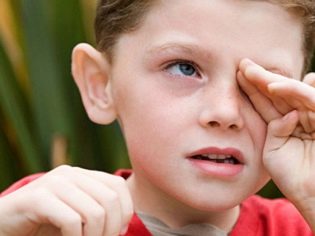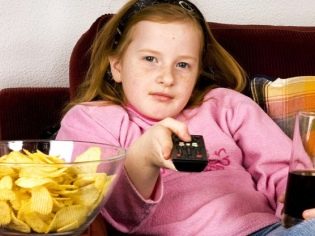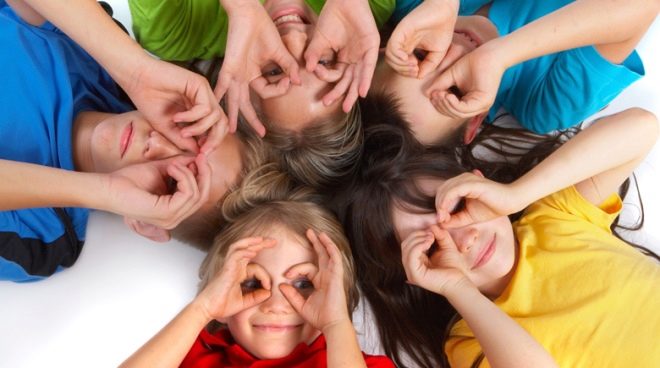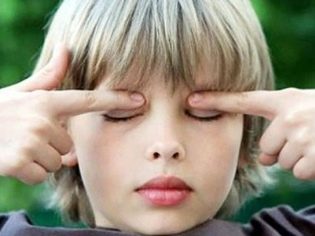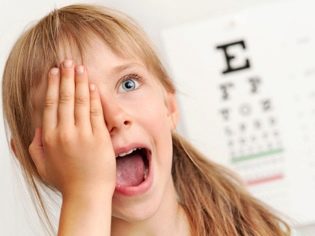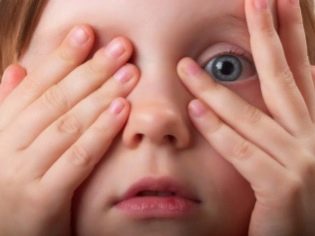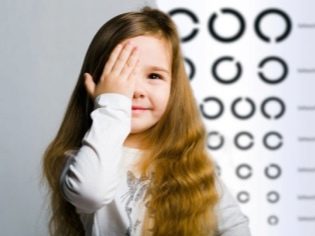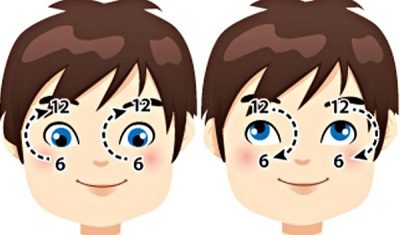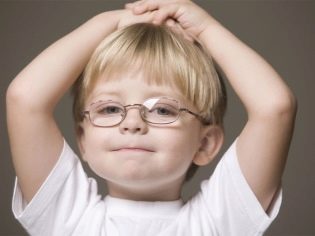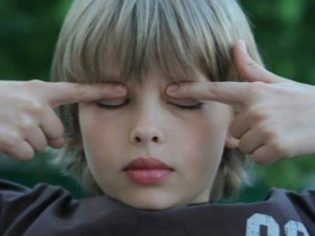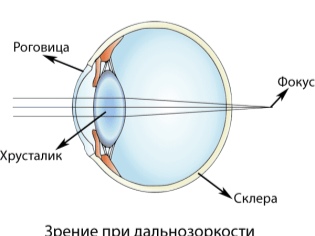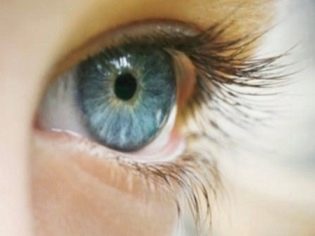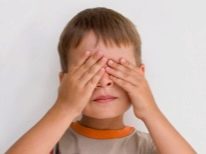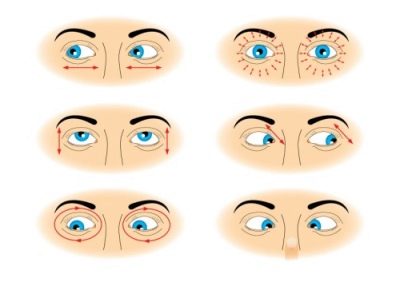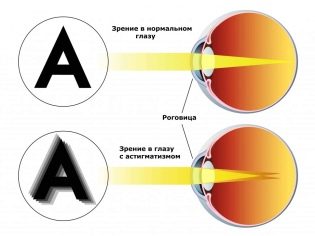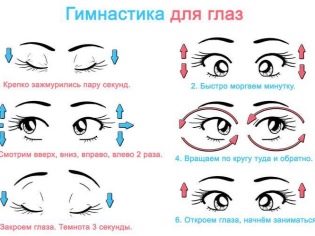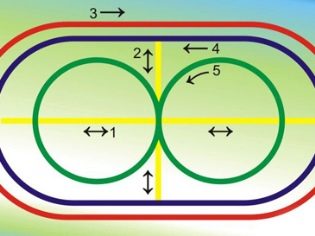Visual gymnastics for children
Undoubtedly, of all types of sensitivity, sight most influences the development of the personality in all senses. Therefore, eye health needs to be maintained from an early age. When it comes to visual hygiene in children, the responsibility for the quality of activities carried out aimed at restoring and strengthening visual abilities falls on the shoulders of teachers in preschool educational institutions, school teachers and, above all, parents.
One of the easiest and most effective ways to maintain a child’s vision at the proper level is visual gymnastics.
Causes of eye diseases
Vision in children may be reduced due to the influence of various factors. The main ones are discussed below.
Genetic predisposition
If one of the parents (or both) has any ophthalmic pathology, then the likelihood that the child will sooner or later manifest similar problems will sharply increase. Therefore, it is not worth waiting for when his vision begins to decline. You should visit an ophthalmologist to prevent or detect disease at an early stage.
Unattached eye load
This is in our age of smartphones and gadgets - one of the most common causes of reduced vision in children. Throughout the day, children's eyes are exposed to a TV, computer, tablet, smartphone, etc.
Also, the reason may be reading at too close a distance from the book, in poor light or with a long absence of interruption. Of course, at the heart of this problem is the negligence of parents, who by frivolity allow the child to use gadgets uncontrollably or sit for hours in front of the TV.
Children’s eyes need to rest and better to alternation of loads and rest was within a certain mode of the day. Visual fatigue at the initial stages is manifested by headache, dizziness, sleep disturbance, pain and baking in the eyes.
It is necessary to pay attention to these symptoms in due time and to limit the child from “communicating” with the computer, TV and other similar “toys” as much as possible.
Vitamin deficiency
This problem is also acute among a large number of pupils and children of younger age. The organization of healthy baby food has a great influence on the quality of vision and on health in general.
The daily diet of the child should in the optimal amount contain all the vitamins and minerals necessary for the normal development of the child's body. If a child systematically lacks vitamins A, B, D, as well as zinc and iron with food, then with time he may begin to have vision problems.
This problem is now quite relevant and is mainly related to the fact that children from an early age, with the connivance of parents, an addiction to healthy food is formed: variety of fast food, chips, confectionery delights, sweet carbonated drinks, etc. Naturally, such food may not contain sufficient quantities of nutrients and vitamins, which are important in childhood.
Reading at an early age
There are many dads and moms who by all means seek to instill in their child the love of books at a very early age, hoping that this inclination of the kid will always stay with him for the rest of his life. The goal is good, but more often it happens that because of this the child acquires lasting visual dysfunction.
The eyes of young children (up to 4 years) are arranged so that a long reading without a break very quickly leads to a decrease in vision. During this age period, the child learns a lot of information, but it must be conveyed to him in different forms.
The maximum time that a child at this age can spend on reading a book without compromising health is 15-20 minutes a day.
Diseases
Pathology of the spine, central nervous, endocrine, immune and other systems. As you know, in the human body there is not a single isolated system. Everything affects everything. Therefore, it is not uncommon for vision loss to be associated with any organic pathology of other organs.
Lack of physical activity
In order for the visual system to function normally, it is necessary that the cells and tissues are regularly saturated with enough oxygen. One of the main ways to maintain the level of oxygen in the tissues at a decent level is to maintain physical activity.
In recent years, the level of physical activity in children (especially urban residents) has decreased significantly. This is largely due to the fact that the usual outdoor games did not withstand competition from the computer and TV.
Neglect of Prevention
When the child’s complaints, though seemingly insignificant, remain without proper attention from the parents, the disease will progress.
In most of these cases, medical care is sought when vision is reduced several times. therefore It is important when the first symptoms of visual impairment in a child appear, contact an ophthalmologist.
Purpose of gymnastics
The main task of visual gymnastics is to strengthen the eye muscles. Like any other muscles in our body, they can weaken, which will affect the quality of vision. Therefore, a set of simple exercises aimed at preventing a decrease in visual acuity.
Usually for the first time the child learns about visual gymnastics, coming to kindergarten. Developed a wide variety of techniques for physical fitness for children of all ages. They are mostly in the form of a game or in verse.
Due to the regular conduct of visual gymnastics, a child from an early age is formed the realization that vision is very important for a person and must be protected.
With a responsible attitude of parents to the health of their offspring, he will be able to transfer these useful skills into adulthood.
With the help of visual gymnastics, it is possible not only to prevent the development of numerous eye diseases, but also to restore vision. Thanks to the exercises, the working capacity of the visual apparatus is restored, and the trophicity of nearby tissues is improved.
If classes in visual gymnastics have become familiar to a child during his stay in kindergarten, then it is likely that he will become a student of visual hygiene and will avoid numerous health problems.
The main objectives of visual gymnastics:
- improvement of not only visual, but also mental abilities of the child, due to the fact that with the help of a number of exercises increases the speed of processing of visual information;
- ensuring proper eye rest;
- prevention of eye diseases;
- restoration of visual function in children with reduced vision;
- rendering a calming effect on all parts of the nervous system.
If you follow all the rules of visual gymnastics, then a positive effect will come very soon.
Main aspects of the technique
Caring parents need to know that children born before the appointed time and in children with weakened immunity the risk of myopia (myopia) increases significantly. There is also a great risk of this disease in children with burdened heredity. In such cases, from a very early age the child should take preventive measures to prevent the development of the disease.
A major role in maintaining the vision at a normal level is played by the strengthening of the eye muscles. This will help regular visual gymnastics. Everyone knows that young children are restless, so visual gymnastics should not be a set of “dry” rules.
Children should be interested, and they must necessarily join the process, and also try to follow all the recommendations exactly, otherwise there will be no benefit from such gymnastics. Therefore, more often in preschool institutions gymnastics for the eyes is carried out in the form of a game.
The principle of the beneficial effects of visual exercise is to alternate tension and relaxation of the eye musclesthat helps them in the future to cope with the increasing load. One of the main guarantees of successful gymnastics is systematic, that is, the positive effect of practicing such exercises will be evident only when the child performs them regularly.
Visual gymnastics for children of preschool age on average is carried out 3 times a day for 5 minutes. Ophthalmologists have developed a set of standard exercises for the eyes, recommended for use in preschool institutions. The following is a list of some of them:
- Large colored circles (made from colored paper or cardboard) are attached to the ceiling. Within 8-10 seconds, the child should carefully look at each of them. When looking from one circle to another, it is important that the child moves only his eyes, and the head must remain in a fixed position. When the baby has finished looking at the circles, he should close his eyelids for 10-15 seconds. Then repeat the exercise again.
- The child tries to force his eyes shut for 5 seconds, then drastically relax them. In this order, repeat the exercise several times.
- The child, without moving his head, slowly raises his eyes up and down, and then left and right. For a small child it is better that he could fix his eyes on an object that corresponds to one of the extreme points.
- It is necessary to attach a picture with a complex pattern to the wall or ceiling. The child should, without moving the head, carefully look through all the lines. After this exercise, you need to take a break for at least 10 minutes.
- The child alternately fixes his gaze either at the farthest or at the nearest object from him.
These are just a few of the easiest exercises to strengthen the eye muscles. For your child you can find a wider list of guidelines developed by modern experts in the field of pediatric and adolescent ophthalmology.
It is important to remember that even the most interesting play exercises with daily performance (and this is precisely what a serious approach to visual gymnastics requires) can be boring even to the most gambling child. Then he will carry them out formally, without primary zeal. Therefore, it is recommended to change the set of exercises from time to time.
You can find a lot of exercises for the eyes in verses - with this you will be able to captivate your baby even more. Another way to avoid the routine - periodically change the situation, that is, to do gymnastics not only at home or in kindergarten, but also during a walk.
Be sure to ask the kindergarten teacher if visual gymnastics is included in the children's day routine. For preschool institutions, several vision training techniques have been developed:
- using wall or ceiling simulators;
- game gymnastics in the form of games, songs or poems;
- looking at schematic drawings and tables;
- use of stereoscopic images (the image must necessarily be applied to the paper, and not to the electronic carrier, as this can create extra stress for the eye muscles).
Gymnastics
With myopia
If you notice that your child can hardly distinguish objects that are at a sufficient distance from him, then perhaps he has myopia (myopia). In this case, the child must immediately show an ophthalmologist.
The cause of this disease is a decrease in the functional activity of the ciliary muscle, which is responsible for the degree of lens tension. Because of this, the shape of the eyeball is distorted, taking an elliptical shape, as a result of which the reflected rays are focused not on the retinal surface, but slightly in front. Therefore, a child can examine in detail any object only from a short distance.
This condition is corrected by constantly wearing glasses, hardware treatment, physiotherapy, night lenses, drugs (eye drops, vitamin complexes, etc.), laser correction.
For this case, developed a set of exercises for the eyes. They are simple to perform even for the youngest children, but at the same time they have a pronounced therapeutic effect:
- The kid starts to blink as quickly as possible within a minute. After a short break, you need to repeat the exercise again.
- The child should close his eyes tightly and remain in that position for 5-7 seconds, after which his eyes should be wide open. Repeat the exercise 5 times.
- Slowly glance from the ceiling to the floor and in the reverse order. Repeat the exercise 3 times.
- Suggest the child to rub the palms together, and then, when they are warm, apply them for a few seconds to the eyelids.
- The baby needs to fix his gaze on the tip of the nose for a few seconds. Then close your eyes. In this order, repeat the exercise 5 times.
At the end of the gymnastics, you can massage the eyelids of the child with light circular motions, or suggest that he do it himself. The load must be feasible! Exhaustion during physical time can have the opposite effect, therefore during exercise you should carefully monitor the condition of the child.
In pediatric hyperopia (farsightedness)
Children's farsightedness is due to the fact that the light rays focus not on the retina, but beyond its borders. Because of this, the child cannot exactly see objects that are close to him. If a child under the age of eight is diagnosed with weak or moderate hyperopia, this may be a variant of the physiological norm and be associated with the relatively small size of the eyeball and its slightly flattened shape. As they grow older, the children's visual system becomes more sophisticated and vision problems disappear by themselves.
So that children's hyperopia did not have time to take a stable form, should regularly engage with the child visual gymnastics:
- First, you need to properly prepare the muscles for charging. The following exercise is suitable for this: the baby assumes a horizontal position, and with two palms tries to close their eyes as tightly as possible (it is desirable that no light penetrates through them at all). This simple exercise will help relieve excess tension from the eye muscles.
- Then you can do an exercise that wears an element of the game, so never bore your child. Ask him to focus his gaze on the tip of the nose and in a position to lead them through the air, “delineating” the contour of some imaginary object.
- After that, let the baby sit on the chair and carefully, slowly, turning his head to the side, briefly stare at each object. Repeat several times.
Regular performance of such exercises in childhood not only reduces the risk of developing persistent hyperopia, but also helps prevent presbyopia (the age form of hyperopia, which is characteristic of people over 45 years of age).
Astigmatism
Unfortunately, such a disease of the visual apparatus as astigmatism among children is now very common. It is caused by a pathological change in the shape of the eyeball, lens and cornea. Therefore, the point at which the light rays are combined into a beam is shifted, because of which the “picture” becomes fuzzy.
For children with similar problems, Dr. Norbekov has developed system of special exercises:
- The child tries to direct his gaze upward, mentally guiding him through the forehead.
- The eyes of the baby move to the right and left, while he represents that his eyes "go" further.
- The child tries to look through the air through the contour of some geometric shape.
- The index fingers of both hands the child brings to the tip of the nose. Then he starts to breed them in different directions. His goal is to try with peripheral vision to observe the movement of the fingers, while fixing his eyes on the tip of the nose.
The author of this method insists that achieving good vision, having diseases of the spine is almost an impossible task. Therefore, he recommends, in addition to regular exercises in visual gymnastics according to his method, to take the baby to exercise therapy to strengthen the back muscles.
For children with squint
Squint is the position of the eyeballs in which they are asymmetrically relative to the central axis. The incorrect location of the eyeballs can only be considered physiological in newborns who do not know how to fully fix their gaze on objects. If more than 12 months have passed since the birth of your baby, and the squint has not passed, then this is a reason to contact an ophthalmologist.
The cause of this condition is usually the weakness of the eye muscles or the non-proportional hypertonia of some muscle groups of the eye.
For children with similar disorders, exercises consisting in continuous observation of moving objects and long fixation of gaze on fixed objects will be useful. Another useful exercise is that the child tries to draw the outline of an imaginary figure with his gaze. Now there are many different visual simulators designed specifically for the correction of strabismus in children. They are multi-colored schemes with complex patterns that represent the trajectory of the child’s gaze.
Exact daily exercise to improve vision requires perseverance and patience from both the child and the parents. But this sacrifice is fully justified, because the most valuable thing at stake is the healthy eyes of your baby.
In the next video you will find gymnastics for children's eyes in the form of a game.



